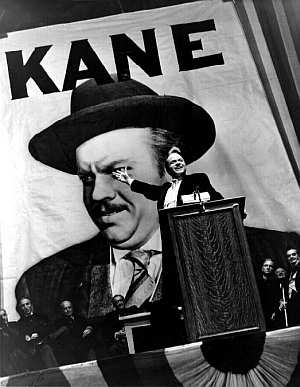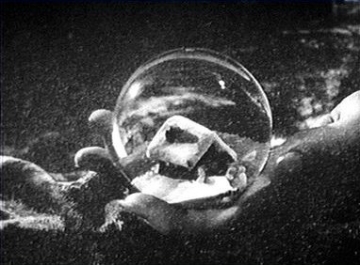A lot of people liked Unforgiven or Once Upon a Time in the West much more than Stagecoach or My Darling Clementine. That's cool -- as much as I love Clementine, I'd probably pick those two over it as well. But a lot of people listed this as one of the reasons they preferred the revisionist Westerns to the classics: they were in color.
This is not cool.
Now, your taste is your taste, and obviously, you're entitled to like or not like whatever you want. But I implore you to judge films not by how old they are or if they're in black and white or color, but by how well they do their job. For example, Citizen Kane is utterly unthinkable in color. Remember all that low-key lighting with pockets of deep shadows? If Orson Welles and his cinematographer Gregg Toland photographed those scenes in color they would've completely altered that effect. So am I saying black-and-white is superior to color? Of course not. If Citizen Kane were photographed in color (and yes, color film stock was around in 1941, though it was much more expensive than black and white), Welles and Toland would've made different choices regarding their lighting, and who knows, they could've come up with images every bit as stunning. To dislike Citizen Kane because you thought that the photography was over-the-top, distracting, show-offy, etc., is a valid argument. But people who say they dislike Citizen Kane because it's in black and white say a lot more about themselves than they do about the film.
It's a form of reverse snobbery, if you will -- how would you feel if I said old movies were inherently superior to movies of today? You'd say I was a jackass, and you'd be right -- like any art form, most of what gets produced during any era of cinematic history is going to be disposable, including the '30s and '40s, the golden age of Hollywood.
Anyway, I came across the following in The Onion A.V. Club, the arts and entertainment section of our nation's finest satrical newspaper. They have this feature called "Ask the A.V. Club," where readers write in to have their questions answered by the A.V. Club staff. Please read it, paying special attention to the last paragraph, and feel free to leave your comments below. I will now dismount my soapbox.
Not Hooked On Classics
I am a huge movie fan, having seen pretty much all the greats from the '70s on. However, I felt my knowledge was lacking from having not seen many of the consensus greats from the '60s on back. Working from several top-100 lists by reviewers I like, I began watching these oldies, and found they weren't so great. I found The Big Sleep to be a huge letdown, with Bogey's hammy line readings and an uninspired story. I understand why Citizen Kane is considered great, but I had to hear the commentary to really appreciate it. It is not until the French New Wave of the '60s that I find films I really dig. I wonder: Do these old films seem mediocre because I'm seeing them after witnessing the films they inspired? Was acting in the '40s and '50s not real enough? Am I the only one who thinks that these films, while great at the time, should be looked at as historical sources of modern cinema and not placed above far superior modern films?
Brian P. Adams
A mortified Noel Murray replies:
First off, when you refer to "far superior modern films," you do realize that you're talking about a matter of taste, right? There's very little that's quantitative about evaluating movies. For example, naturalistic acting is just fine, but it's far from the only effective mode, even in 2007. Christopher Walken is about as natural as high fructose corn syrup, but when he's on the screen, it's hard to look away from him—even in bad movies. Similarly, no one kind of storytelling is superior to another. In fact, sometimes "storytelling" is the last thing on a filmmaker's mind. Just read interviews with the late Robert Altman, who considered his films' stories secondary to their record of human behavior. Or hold a séance and consult with the creators of The Big Sleep, who were more interested in rat-a-tat dialogue and abstracted tough-guy posturing than in revealing who killed who and why.
It's not that the classics are unassailable, by any means. They can be problematic thematically, too clunky in the staging, and, yes, the acting can be distractingly broad. But when seen in the context of the other films from their era, the reasons why they're considered great—and not just "great for the '30s"—become plainer. Once you get used to some of the snags of older movies, from the accidental racism to the fakey studio "exteriors," you can focus on other things, like the odd charisma of stars like Humphrey Bogart, the intense clarity of the images, and the complex revelations about human nature.
What you don't want to do is become one of those willfully ignorant movie buffs who becomes convinced that film art has been perfected in the last 10 years or so, and that everything that came before was just a trial run, not worth studying in and of itself. That's such a shallow, arrogant, wasteful way to approach art. It's basically saying, "Since I only want to see what's familiar and immediately enjoyable to me, yet I still want to think of myself as a person of taste and intelligence, I have to find some way to assert that the things I already like are the best, and the things I don't want to deal with are inferior." Brian, you seem smart and well-meaning… please, don't be that guy.





